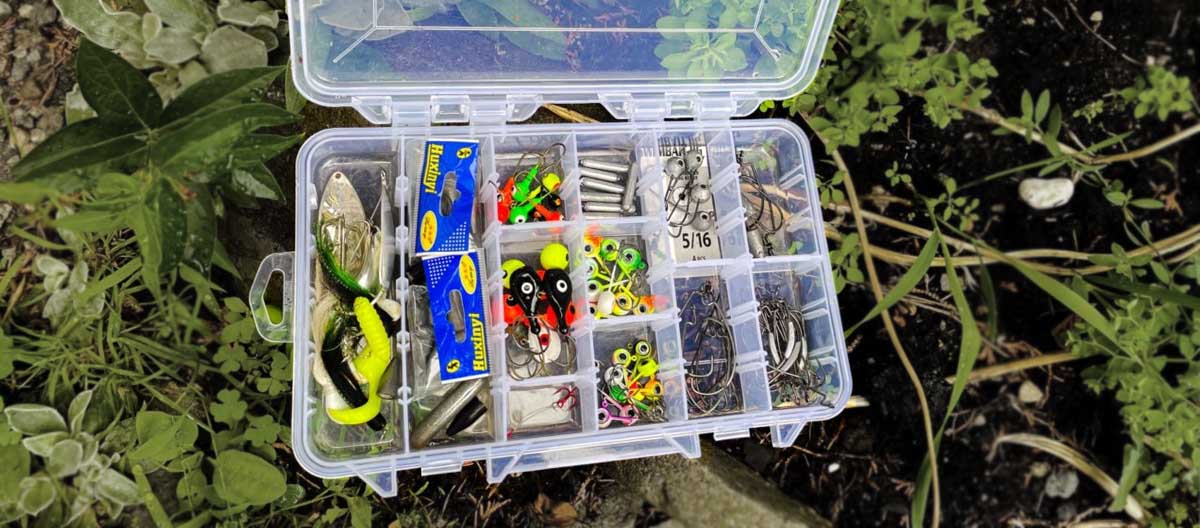More Fishing Gear & Tackle Essentials
The fishing gear and tackle on this list are meant to prepare you for different situations. You may not be able to gather everything at once, but believe me, it is worth it to take the time to make sure you have all the essentials. Now, back to the list...
Split shots
These are tiny little weights in the shape of a ball. They can contain lead, so be mindful of this especially when fishing with children. Split shots are designed to attach to your fishing line for casting, sinking, and sensitivity purposes.
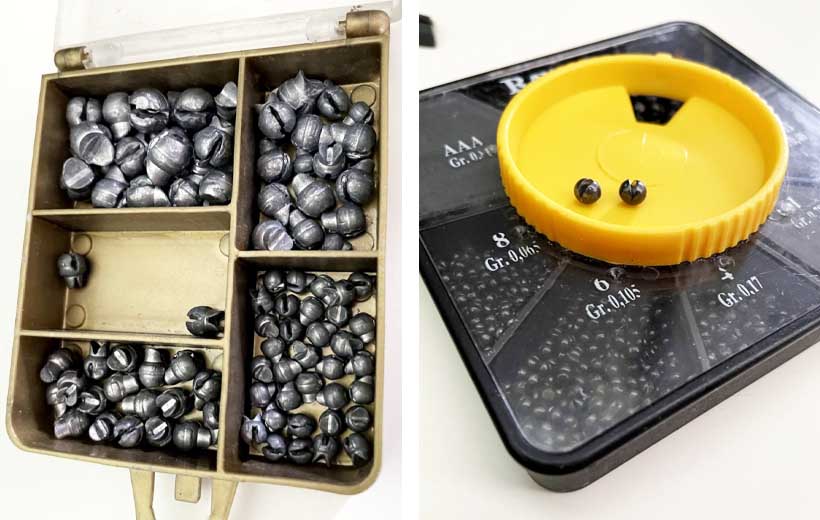
Note: Water Gremlin offers a “Removable Split Shot Pro Pack,” which would be very useful in your tackle box.
Jig heads
These are essentially made up of a hook with a weight attached to them. They come in all different sizes, colors, designs, and shapes. They are specifically for artificial soft plastic baits. However, if you tip them with a worm or minnow, especially when casting and retrieving, they can be extremely effective. If you decide to use live bait without a bobber, I definitely recommend grabbing a few and experimenting with them. Start off with 1/8 oz jig heads and go up from there. Don’t think you can’t use them under a float or bobber as well, because you can. However, a regular hook and sinker (in my opinion) is more effective.
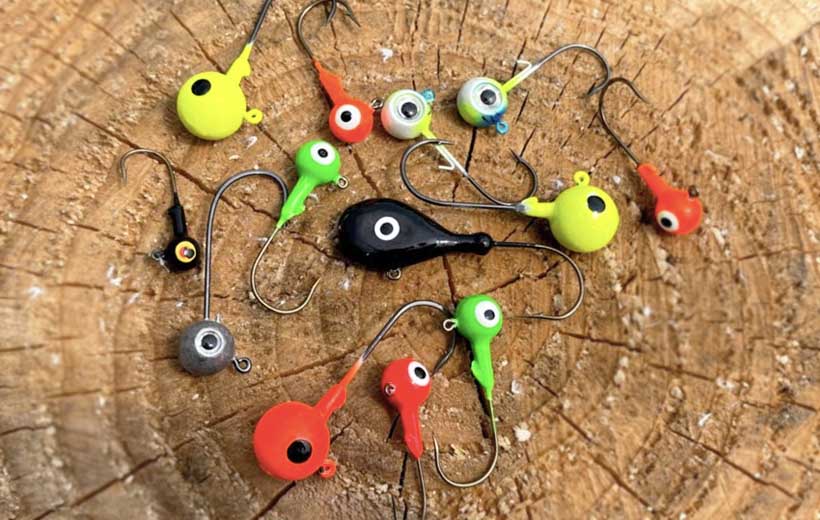
Floats (Bobbers)
Floats (or bobbers) were designed for mainly two reasons:
1) To keep your bait off the bottom of the water and suspended at a predetermined level in the water column.
2) To provide a visual indicator that a fish has taken your bait.
There are two specific styles of bobbers I recommend using and getting to know. You should also consider buying a couple of each in different sizes and brands.
Basic entry level clip-on bobber: These make float fishing simple, easy, and fun. You simply clip it onto your line, cast out, and wait for it to disappear.
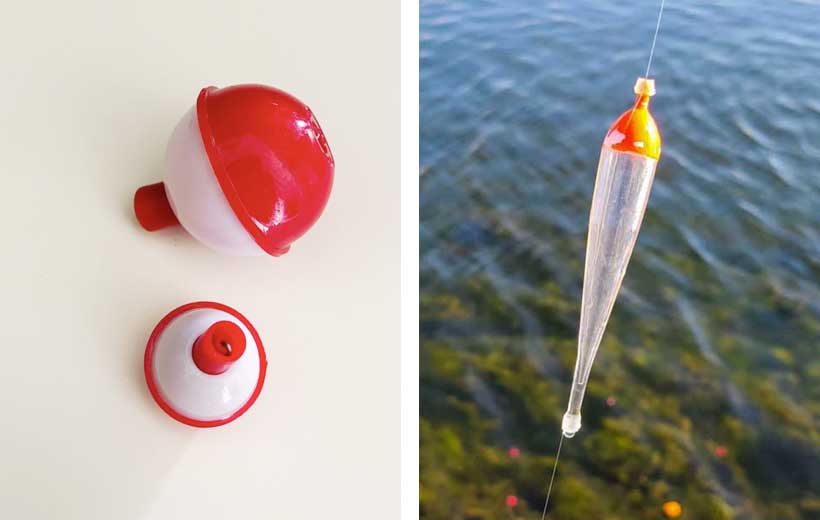
Slip float/bobber: These bobbers were designed for anglers to fish in any depth of water without disrupting their bobber placement. They’re very popular when fishing for species of fish that are known for suspending (neither sinking or rising) in the middle of the water column. This type of bobber however, can also be useful in many other situations.
When you’re looking to purchase your bobbers, always consider the type of bait and size weight(s) you’ll be using. Balance is everything. You don't want to use a big bobber for small panfish or when the fish takes your bait, the bobber will just slightly bounce up and down, and you might not realize you have a fish on the end of your line.
Fishing line
Always carry an extra spool of fishing line in your tackle box; better to be safe than sorry.
Measuring tape
So you can be sure you’re keeping the appropriate length of fish according to your region’s rules and regulations. It’s also good to have if you want to keep a record of your longest and biggest fish.
Portable scale
To weigh your catch if you want to know your fish’s exact weight.
Small scissors and/or nail clippers
You should always have a pair of scissors, nail clippers, or both in your tackle box. They make for quick and easy line maintenance. Cutting your line with your teeth can and will eventually weaken and crack them - trust me, I know.
Pliers
Always have a pair of pliers, whether they are fishing specific or the ones straight out of your tool box. These will give you more leverage when extracting your hook from a fish’s mouth. They will also eliminate the danger of severely cutting yourself when removing a hook from a tooth-filled fish; the longer the better.
Super glue
If you want to ensure your knots are as strong as possible, after the knot is nice and tight, add a dab of super glue to it.
Gloves
If the thought of handling your live bait and fish is something you find unpleasant, you're going to want to keep a pair in your tackle box. There are gloves specifically for handling fish, but they can be pretty pricey.
Cloth or rag
Handling worms, minnows, fish, and so forth, can get pretty messy and wiping your hands on your pants is not ideal. Carry a towel with you to maintain cleanliness, especially if you don't want your partner (or mother) complaining.
Stringer
This is a rope or metal chain that helps keep your fish alive in the water while you continue fishing. If you plan on keeping fish to either take pictures of them or take them home, I recommend keeping one of these in your tackle box. I prefer the metal stringer myself.
First aid kit
It doesn’t have to be a big elaborate kit, just your basic band-aids and alcohol pads if nothing else.
Fishing net
I am going to teach you how to handle and land all types of fish with your bare hands. However, a net is always very helpful, especially with landing bigger tooth filled fish. The choice is yours.
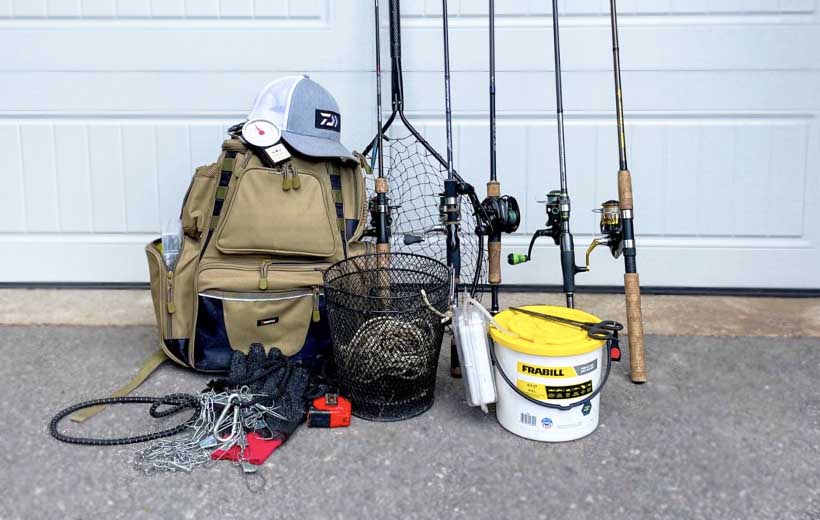
Note: If you’re going to be fishing with live minnows, consider buying a minnow bucket to transport them and an aerator to keep them alive. When you buy minnows at a bait and tackle shop, they do put them in a bag inside a box with oxygen. However, carrying a box with the rest of your fishing gear is not travel friendly.
Now that you have all the fishing gear and tackle you need to get started, let's move on to your rod and reel setup.
